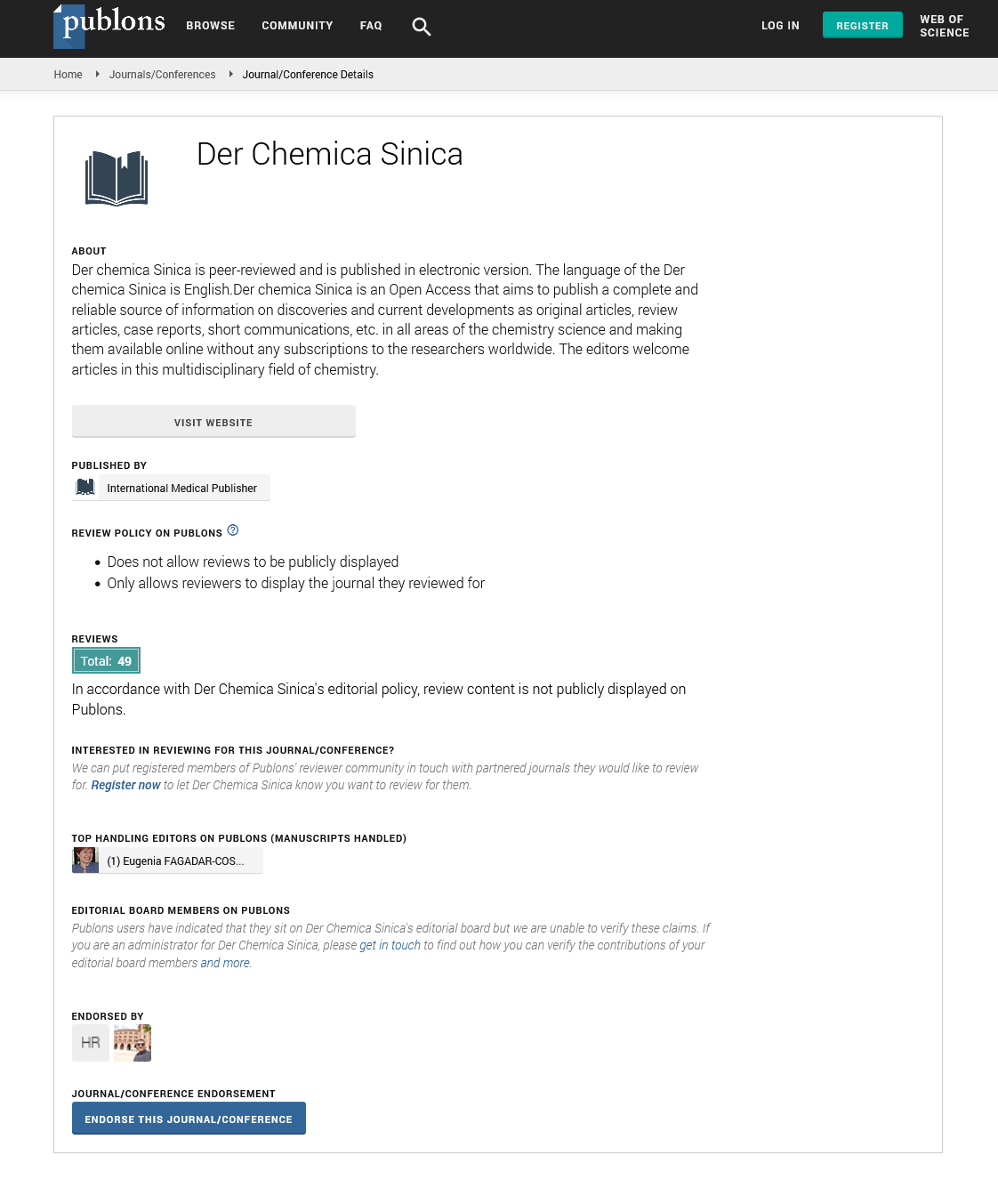ISSN : 0976-8505
Der Chemica Sinica
Abstract
An extensive review on 1,2,3 and 1,2,4-triazines scaffold-valuable lead molecules with potent and diverse pharmacological activities
Triazine is the chemical species of six-membered heterocyclic ring compound with three nitrogens replacing carbon-hydrogen units in the benzene ring structure. The names of the three isomers indicate which of the carbonhydrogen units on the benzene ring position of the molecule have been replaced by nitrogens, called 1,2,3-triazine, 1,2,4-triazine, and 1,3,5-triazine respectively. Symmetrical 1, 3, 5-triazine is the common. Triazines are prepared from cyanic acid amide by trimerization (1, 3, 5-triazine). Pyridine is the aromatic nitrogen heterocyclic compound having only one nitrogen, and diazines are with 2 nitrogen atoms, triazine having three nitrogen and tetrazines are with 4 nitrogen atoms on the benzene ring system. Triazines are weak base. Triazines have much weaker resonance energy than benzene, so nucleophilic substitution is preferred than electrophilic substitution. Heterocyclic bearing a symmetrical s-triazines or 1, 3, 5-triazines moieties, represent an interesting class of compounds possessing a wide spectrum of biological activities such as anti-cancer, antiviral, fungicidal, insecticidal, bactericidal, herbicidal and antimicrobial, antimalarial agents. They also find applications as dyes, lubricants and analytical reagents.
Author(s): D. Srinivasa Rao, G. V. Pavan Kumar, B. Pooja, G. Harika, Y. Anil Kumar and G. Sadasiva Rao
Abstract | PDF
Share This Article
Google Scholar citation report
Citations : 6019
Der Chemica Sinica received 6019 citations as per Google Scholar report
Der Chemica Sinica peer review process verified at publons
Abstracted/Indexed in
- Google Scholar
- Open J Gate
- Genamics JournalSeek
- China National Knowledge Infrastructure (CNKI)
- Directory of Research Journal Indexing (DRJI)
- Publons
- MIAR
- International Committee of Medical Journal Editors (ICMJE)
- Serials Union Catalogue (SUNCAT)
- Geneva Foundation for Medical Education and Research
- Secret Search Engine Labs
- Euro Pub
- CAS (Chemical Abstracting Services)
- University of Barcelona
Open Access Journals
- Aquaculture & Veterinary Science
- Chemistry & Chemical Sciences
- Clinical Sciences
- Engineering
- General Science
- Genetics & Molecular Biology
- Health Care & Nursing
- Immunology & Microbiology
- Materials Science
- Mathematics & Physics
- Medical Sciences
- Neurology & Psychiatry
- Oncology & Cancer Science
- Pharmaceutical Sciences
